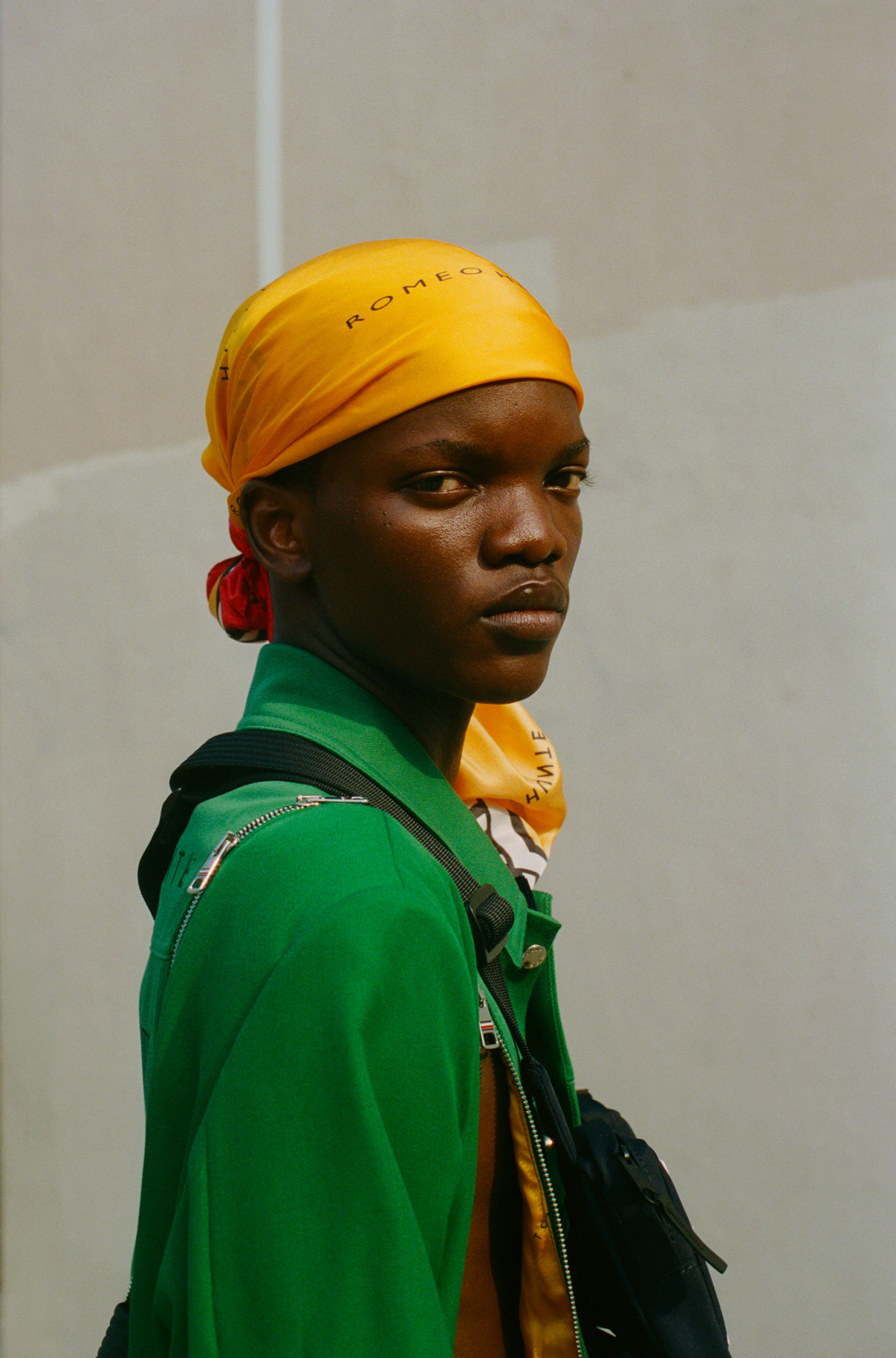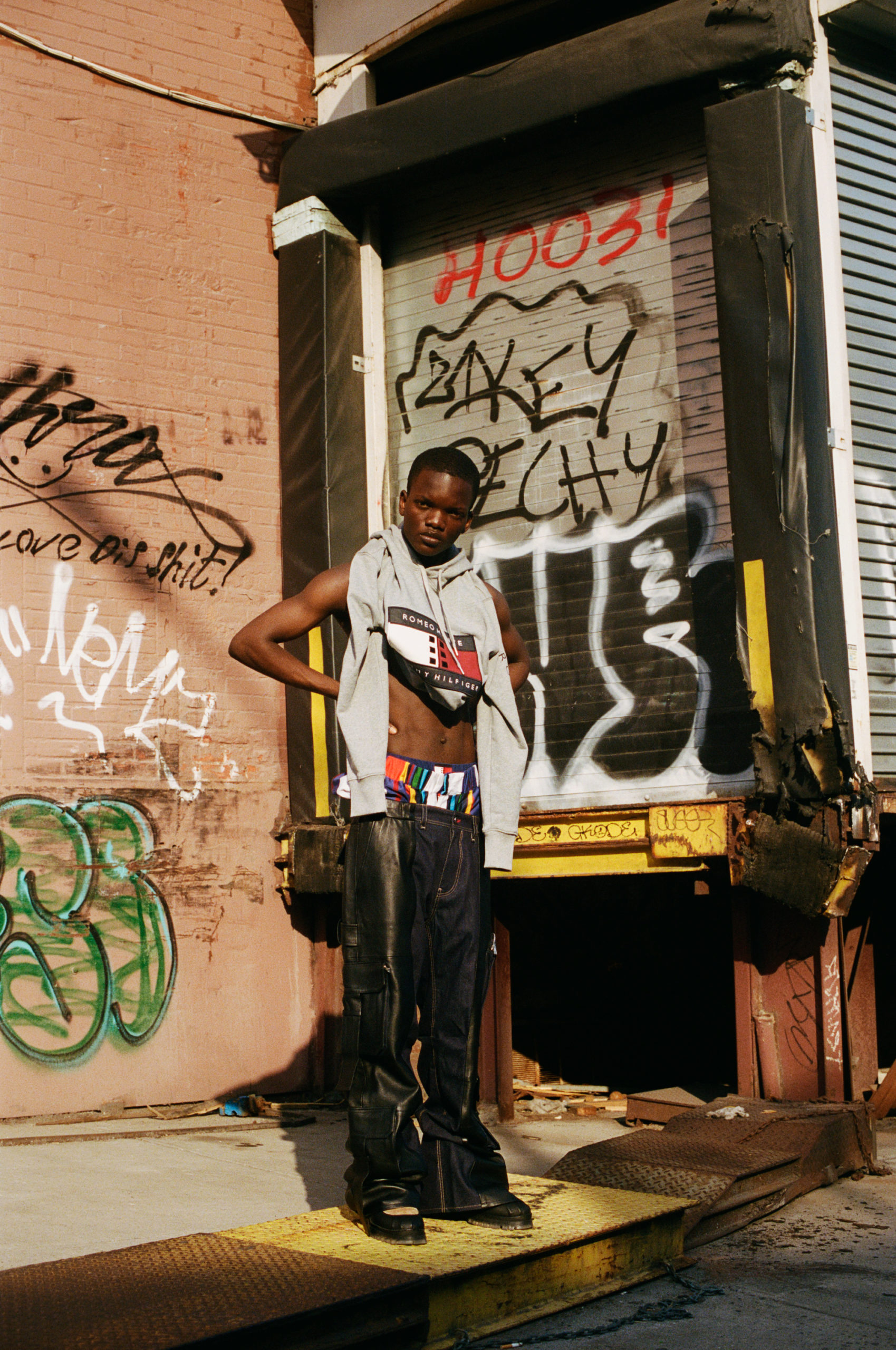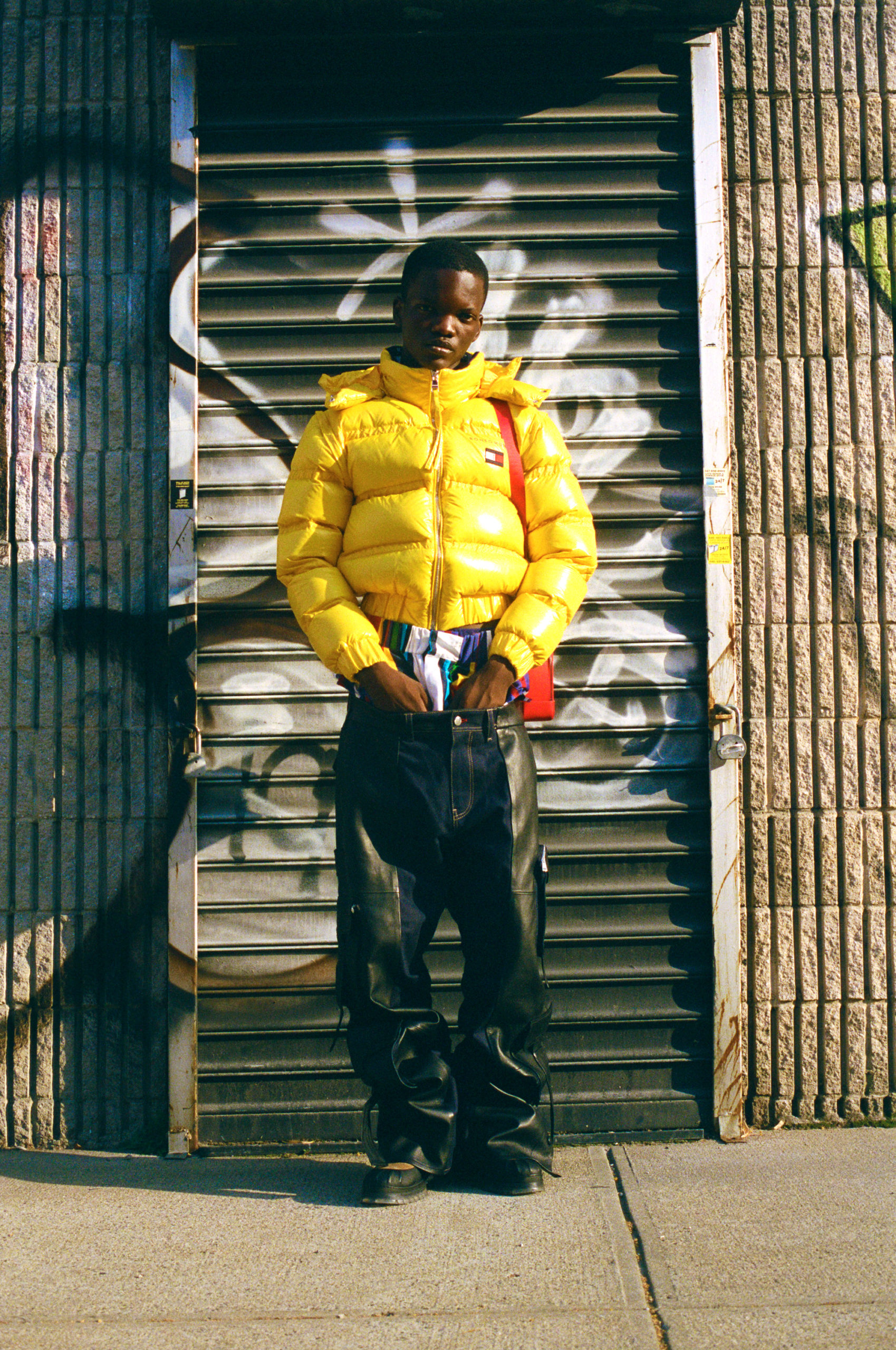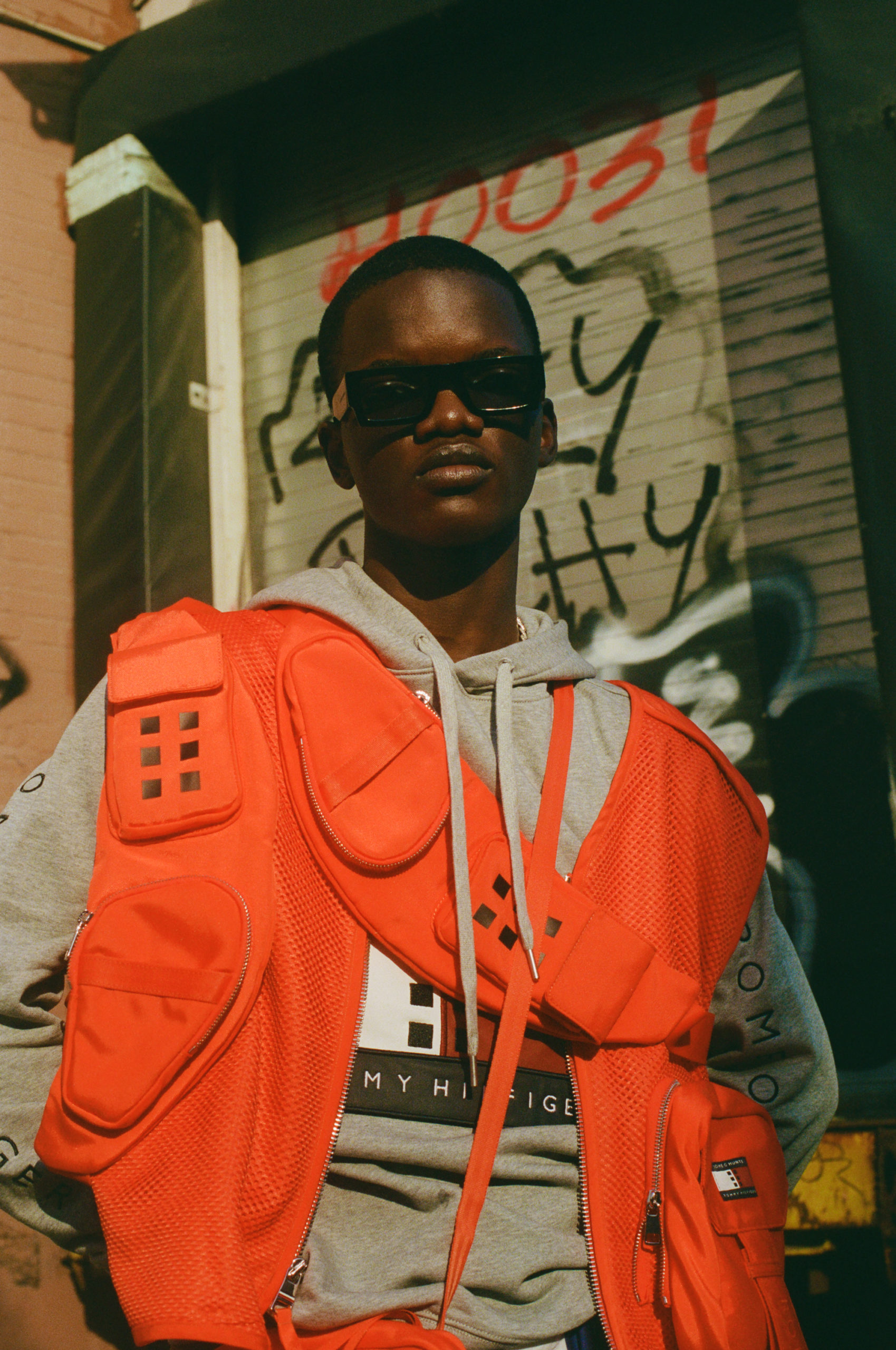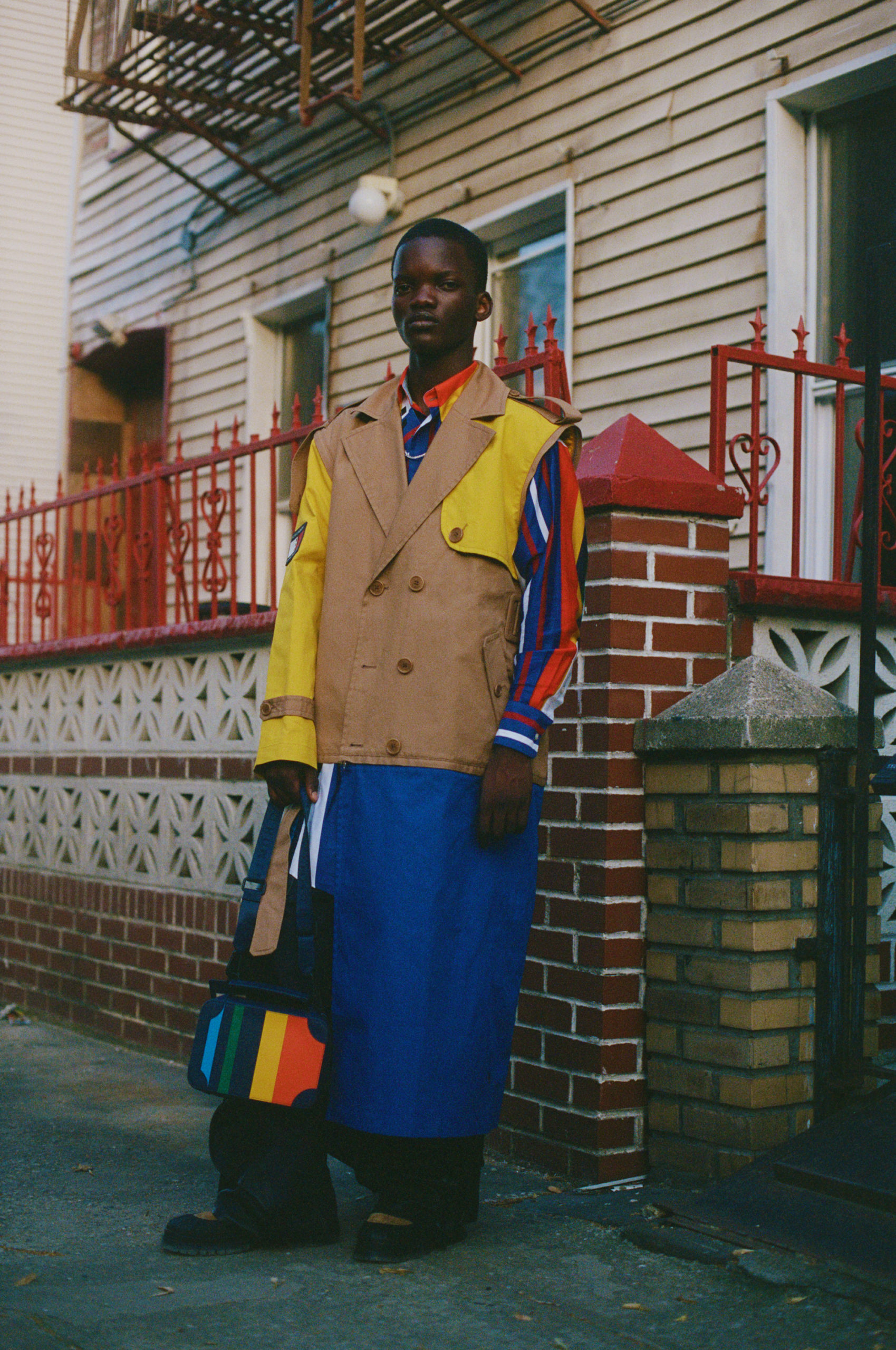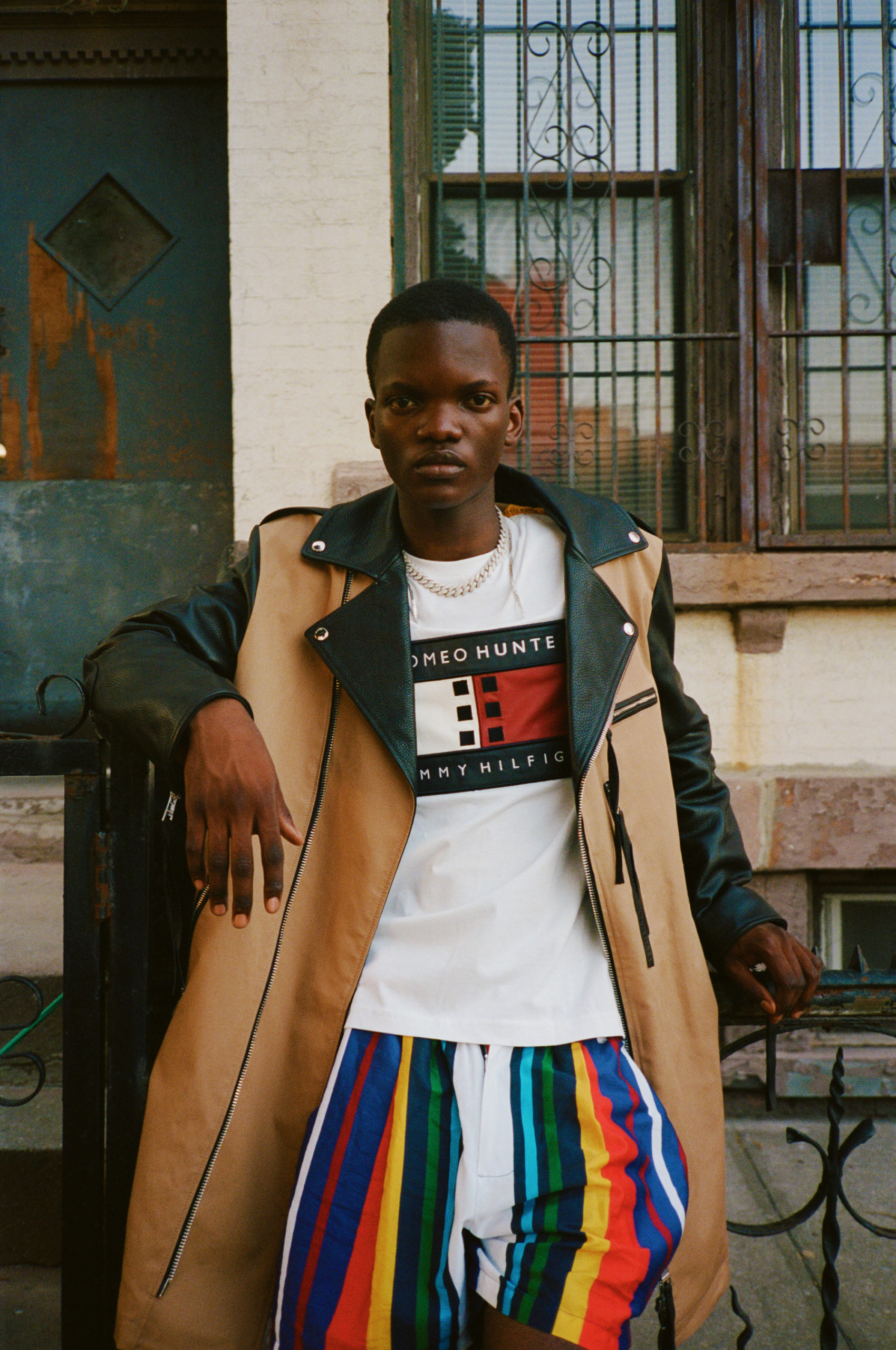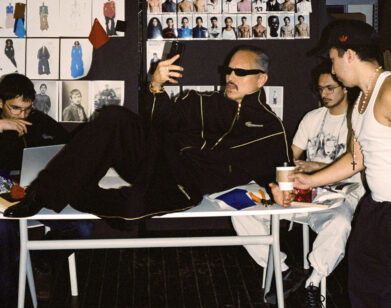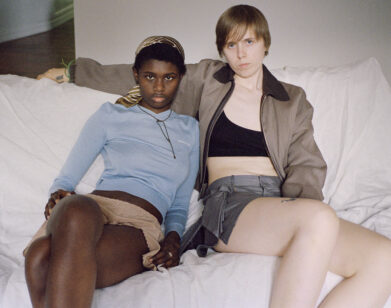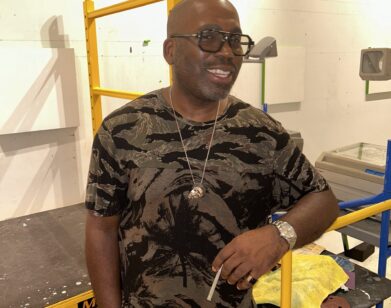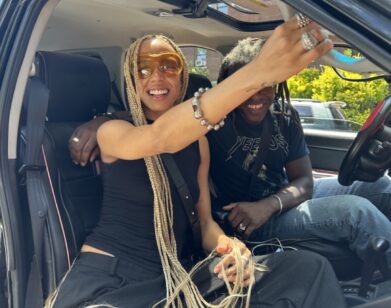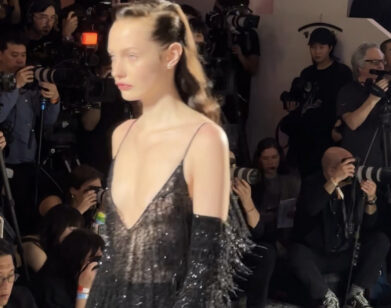team work
Romeo Hunte and Tommy Hilfiger on Brooklyn, Inspiration, and Teamwork
Barely a year after founding his namesake label in 2013, Romeo Hunte saw some of Hollywood’s mononymous queens of fashion wearing his clothes in quick succession: first Zendaya, then Beyoncé. Eventually Michelle Obama, Dwyane Wade, James Harden, Chris Paul, and Maluma all took notice and favored the brand. The New York-based designer’s aesthetic is instantly recognizable: collaged outerwear that mixes the ease of sportswear with luxe tailoring. Not surprisingly, when Tommy Hilfiger met the young designer in the early stages of his career, he immediately felt a kinship and soon became his mentor. This fall, they officially joining forces with the release of the TommyXRomeo capsule, the result of Hilfiger opening up his archives and giving Hunte carte blanche to remix some of the American label’s most iconic pieces: the trench coat, the biker jacket, and the oxford shirt. The result is a bold, gender-fluid collection that reimagines these staples and imbues them with Hunte’s unique in-your-face sensibility. The two designers recently caught up to discuss first impressions and their cross-pollinating collaboration.
———
INTERVIEW: Tommy, what is it about Romeo that sets him apart? What first attracted you to his work?
TOMMY HILFIGER: I see a lot of myself in Romeo. He has a lot of drive and he’s very creative, but he also has a business mind that’s always thinking about what he could do next from a marketing standpoint, what he could do next in terms of production, or how to get the most out of his budgets for his fashion shows. Romeo, what year did we meet?
ROMEO HUNTE: Carly-Ann Fergus introduced us eight or nine years ago. I remember that moment being the first time I interacted with you. You were like, “Who made this?” And I was like, “This is our buffalo-check poncho. Tommy, you have to see my stuff.” That’s how it started.
HILFIGER: Carly was just graduating from Parsons, and she was doing a lot of different work with different designers, and she said, “You have to meet Romeo Hunte.”
HUNTE: The first time I showed you my collection, you told me to just focus on the brand and outerwear. That always stuck with me, to keep going and stay focused.
HILFIGER: And develop that logo.
HUNTE: Yeah, always develop the logo.
HILFIGER: There were times when you were thinking about giving up, because when you’re starting out, you run into all sorts of obstacles. I can relate to that, because over the years I’ve run into obstacles or come to a crossroad and thought, “Should I just work for somebody else? Should I even continue?” I think your drive and passion for the business has kept you on track. It’s not always easy, and I think I’ve been helpful in being a positive mentor on the side, keeping your eyes on that north star.
HUNTE: You told me to dream big and that’s something I always reach for. Sometimes it’s like, “Is it the right time? Is it the right decision for the brand?” But it always turns out great. There are times I think back on where it was down to, like, two weeks before the show, and you would say, “Pull it together.” I was like, “I don’t know if I can do it,” and your advice was to just keep pushing through.
HILFIGER: When I advise you on something, you take it to heart and really implement it in your work. I don’t have to over-explain it and give many examples of what I’m talking about. Basically, just a few words of direction or advice and you pick up on it immediately, and make it even better than what I had envisioned it to be. That’s what our collaboration was all about. You take something that I think is going to be good, and you make it great. Our collaboration, where you took my existing product and redesigned it your way by taking fabrics and materials from your inspiration and fusing them with a lot of my basics, was very cool.
HUNTE: Thinking back to the very first time we collaborated, I was working on my Fall 2020 collection, and I remember calling you and saying, “Hey, I got this idea.” I was inspired by the notion of giving existing pieces new life. I wanted to integrate archival looks and fabrics that you used over the years into my own brand. You gave me the freedom to go into the Tommy Hilfiger archives and have fun. We looked to incorporate 12 vintage pieces into the Fall 2020 collection, reinventing and upcycling them into something entirely new, merging the narratives of both brands. We only had a week until the show, but we pulled it together. You definitely taught me how the industry connects and how everyone works together, and that it’s all about building relationships and connecting with people. That’s always stuck with me, especially as a designer who started out with no resources.
HILFIGER: I’m happy to help. Our People’s Place Program opens the door for underrepresented communities, it embraces talent that hasn’t always had equal opportunities. And the opportunities have a lot to do with introducing them to other people in the industry, or just mentoring them.
HUNTE: I love that you don’t talk too much about it. It’s all about action.
INTERVIEW: The slogan for the forthcoming capsule collection is “Manhattan Prep Meets Brooklyn Street.” Why these two locations and aesthetics?
HUNTE: I was raised in Brooklyn, so a lot of the street style, especially from the ’90s, is compatible with the ethos of Romeo Hunte and the DNA of the brand. It was really important to me to take those elements and mash them together with a lot of the components that I discovered going through the Tommy Hilfiger archives. I wanted to focus on a lot of the design elements and detail, and mix them with that cool Brooklyn street swag. When it comes to Manhattan, it’s preppy; something that’s tailored and changing the narrative of what streetwear is. When I first started my collection, I shied away from being called an “urban designer,” and Tommy always told me to embrace it and own it.
HILFIGER: My hometown [Elmira, New York] has always inspired me. I was inspired by sports. I worked in a sporting goods shop when I was 13 or 14 years old, just folding football shirts, basketball jerseys, and warm-ups, so I kept thinking, “Someday I’m going to work with these clothes.” I’ve always been inspired by Americana, whether it’s American clothes for the outdoors— hunting, fishing, hiking—or whether it’s preppy Americana. I want to put it all into a blender.
INTERVIEW: When did you both realize you wanted to be designers?
HUNTE: My mother molded me into this cool preppy, tailored kid. In middle school, I played basketball and ran track, so I started mixing those styles. I also started playing around with my mother’s old vintage pieces. She helped me understand high-end fashion and introduced me to Tommy, to Gaultier, to Galliano, at a very young age. I started watching Full Frontal Fashion, sketching, and comparing my designs to the designs that I saw on TV or throughout the collections each season, and that stuck with me. My parents saw that I didn’t really want to pursue track and field. They were really nervous and scared about the path I was headed down because they felt like it was leading me to a place that would be challenging, a place where there are not a lot of Black designers. But I was up for the challenge.
HILFIGER: I started my own business when I was 18 years old. I had a jeans shop and then I opened a number of different shops on college campuses. I was buying clothes from various vendors and people in New York. I bought my first lot of clothes from St. Mark’s Place, and my store started becoming popular. I thought if I were to design my own collection, I could give customers exactly what they wanted. I started looking at the other designs I was selling, thinking, “If I had my own brand, I would never put the pockets there,” or, “I would make a higher waistband,” or, “I would make a wider leg,” or, “I would make a different shoulder on the jacket.” I was self-taught. I went to local seamstresses and made samples, and I put the samples in my stores and found that a lot of my customers really liked what I was doing, so I said, “I’m going to build my own brand.” A lot of people told me there’s no way I could do it, that I had to go to design school, and that I needed money and connections. The more I was told all of the reasons why I couldn’t do it, the more I said I’m going to do it.
INTERVIEW: What’s your favorite part of the design process?
HILFIGER: I like thinking of what something could be, and then actually seeing it come to fruition. As I’m looking at a sketch or a rendering, I like thinking, “I could see somebody wearing that on the street,” and then seeing it happen. Or, if you’re looking at a sneaker or a shoe or a watch, asking yourself, “How could we make that new and fresh and different? How can you take that existing item that everybody wears and give it a twist? How could you reinvent it so it sparks a new trend or idea that could blossom into other products?” When that happens, it’s very satisfying.
INTERVIEW: Can you think of an example?
HILFIGER: In the ’90s, I took one shirt and color-blocked it. Then I did the same with a jacket and a sweater, then dresses, and then jeans. It became a big trend. Or, when I first came up with big logos in the ’90s, stores said, “Our customers are not going to wear big logos.” I said, “I can see people wearing big logos so we’re doing it anyway.” It was a huge trend that just keeps coming back all the time.
HUNTE: For sure. The new generation wants the old Tommy pieces. That was something I kept in mind when thinking about the silhouettes and the colors I wanted to bring back. What did you think when you saw our collaboration?
HILFIGER: I thought, my customers are going to embrace it, and your customers are going to embrace it, and that’s what we want: for our customers to have something new, that will also be collectible items. The capsule is not going to be made in huge quantities. We’re going to make each piece really special and really exclusive, and both of our fans are going to see the value in the offering.
INTERVIEW: You both have eponymous brands. Why did you decide to name your labels after yourselves?
HUNTE: I feel like my name could be romantic, but it’s still humble. My grandfather was from Barbados, and he was a bodybuilder but also played many different instruments and even played at Carnegie Hall, so it was all about carrying the torch.
HILFIGER: My first financial backer said, “We should call the brand Tommy Hilfiger,” and I said, “I’m not so sure people can pronounce it.” He said, “Do you really think people know how to pronounce Yves Saint Laurent?” But how many times have I told you, Romeo, that Romeo Hunte is a great name. It’s a name that will go down in history.
This article appears in the September 2021 issue. Get your copy here.
———
Model: Aheem Sosa at IMG
Groomer: Rochelle Walker
Casting: Calvin Wilson at Establishment NY
Styling Assistant: Daiju Edwards

